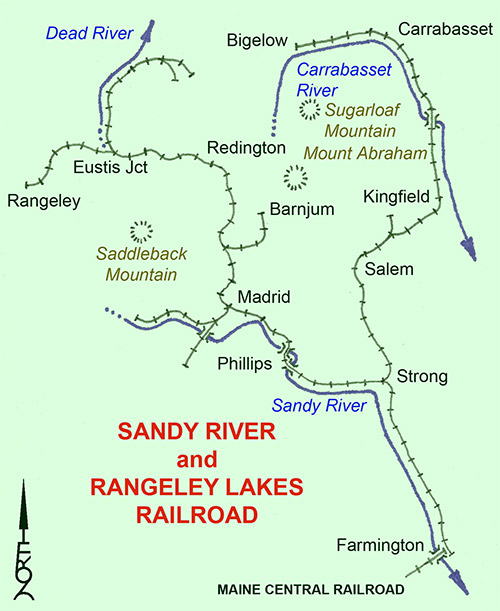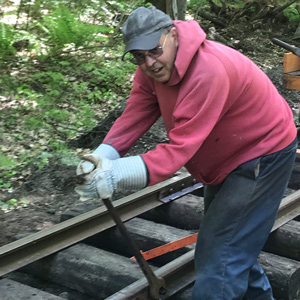History
The Sandy River and Rangeley Lakes Railroad
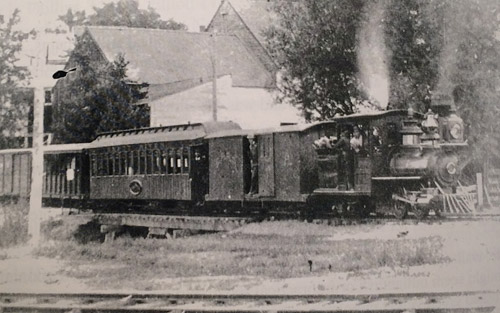
The year 1879 brought new life to Franklin County, Maine. The Sandy River Railroad was born from the need local people felt for a railroad to connect northern Franklin County with the Maine Central Railroad, which terminated in Farmington.
Rangeley, a resort area, wanted public transportation, as well as did Strong, Phillips, Kingfield and other communities. Vast tracts of timber grew in northern Franklin County, with no way to ship the manufactured wood products to southern markets.
The economical two-foot gauge was chosen, which required a minimum of grading, smaller ties and rails, and smaller locomotives and rolling stock. The two foot gauge concept was brought to the Sandy River RR by George Mansfield of Massachusetts. Mr. Mansfield had seen the Welsh two foot gauge railways and initiated the use of this gauge in the U.S. on the short lived (Nov.1877 – June 1878) Billerica & Bedford RR in his home state. We found this photo of Sandy River #2 taken just after she was out-shopped with a new smoke box and larger tender.
The original 18 mile Sandy River Railroad ran between Farmington and Phillips via Strong. In 1883, the Franklin and Megantic Railroad extended the two-foot gauge track from Strong to Kingfield. Following that, the Kingfield & Dead River RR was built from Kingfield to Carrabassett and on to Bigelow.
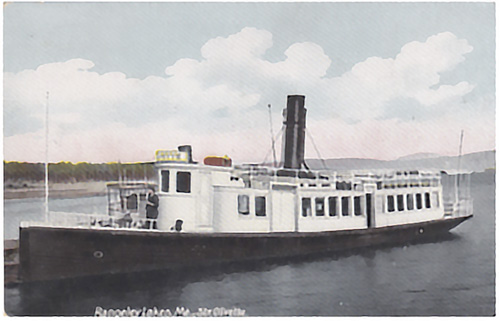
1890 saw the birth of the Phillips and Rangeley Railroad, which began operations the following year. This 28.5 mile extension of the narrow gauge brought an increased tourist trade to the Rangeley area. This line had many long, steep grades and sharp curves. The “Rangeley Express” with its three round trips daily from Farmington to Rangeley, carried high-class city folk for weeks of relaxation in the beautiful Rangeley Lakes area. Here you see a colorized postcard of Olivette one of the prettiest of the lake steamboats that sailed the summer crowd to their campsites.
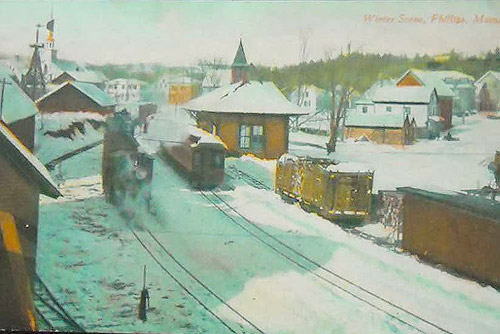
Several large lumber mills sprung up along the railroad. Timber was cut and loaded onto flatcars and log bunks. Branch lines were built into timber country. Larger locomotives were purchaced to haul the long freights that emerged from these mills. Phillips became a bustling railroad town where all major repairs were made to the rolling stock, and where new flatcars and boxcars were constructed. The beautiful colorized postcard from this era indicates the importance and prosperity of this important hub on the railroad.
Strong received much passenger service. Freights originating at the plywood mill at Carrabassett, the big lumber mill at Bigelow, Kingfield’s wood-turning mills, and Strong’s toothpick and clothespin mills added revenue to the narrow gauge.
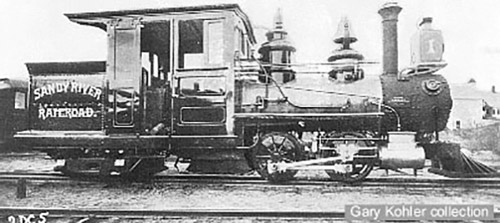
In 1904, the Eustis Railroad was built from a point on the P&R a short distance from Rangeley to serve the timber lands to the north of Rangeley. This was strictly a logging branch, with few passenger trains ever serving it.
The Madrid Railroad, owned by the P&R, yielded more timber for the big mill at Toothaker Pond.
Financial difficulties plagued this collection of two-foot gauge railroads quite frequently, until a banker from Gardiner, Maine purchased the controlling shares of these lines, and in 1908 merged them into one railroad, the Sandy River & Rangeley Lakes Railroad, or SR&RL.
This new railroad owned several hundred boxcars and flatcars, 20 locomotives, about 20 passenger cars and cabooses, several snow plows, flangers, and work cars. Besides this equipment, the SR&RL owned over 120 miles of track – the longest two-foot gauge railroad in America.
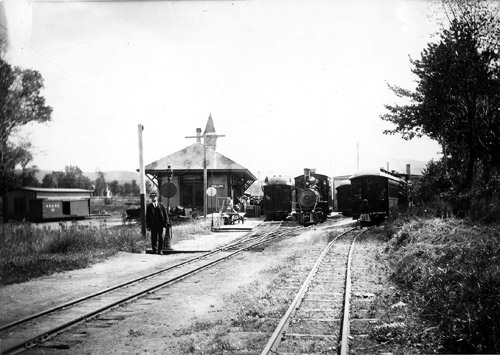
The Maine Central Railroad acquired ownership of the SR&RL in 1911, owning it until 1923. Many improvements were made during these years. New locomotives were purchased and much rolling stock was added to the roster. Locomotives and cars were equipped with air brakes and automatic couplers. During the 1920’s, trucks and automobiles began a new way of life for Franklin County residents, and by 1930 the railroad was declining. Trains were fewer, and passengers lessened.
Railbuses were constructed from highway buses at the shops in Phillips, and replaced steam passenger trains during the spring, summer, and fall months.
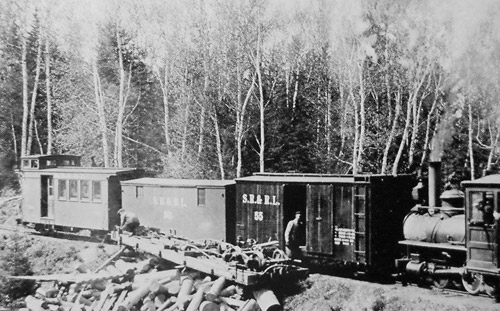
The SR&RL’s demise came in 1935-1936. Cars were sold or burned, locomotives were scrapped, and the rail was ripped up. This left only the empty grades, buildings, and an occasional boxcar or passenger car acquired by an area resident or business, mostly for storage uses.
Today’s SR&RL RR
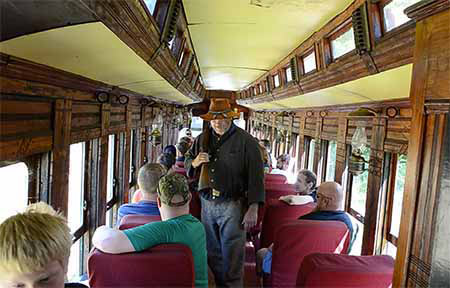
Since 1970, an effort has been made to rebuild a part of this railroad, restore some of the passenger and freight cars, and lay rail on a portion of the old P&R grade in Phillips. This purely volunteer effort began as the Sandy River Railroad Park, continued as a division of the Phillips Historical Society, and today operates as a non-profit corporation under the name of the Sandy River & Rangeley Lakes Railroad.
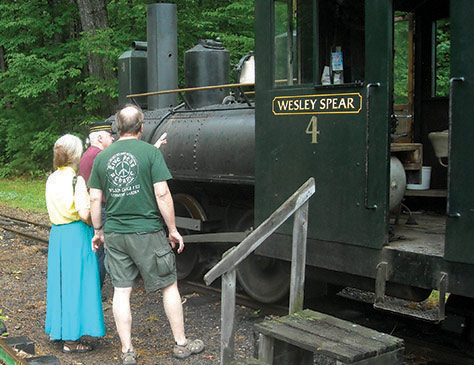
On operating days we give rides behind steam locomotive Monson #3, a 1912 Vulcan Locomotive Works 0-4-4T, on lease from the Maine Narrow Gauge RR Museum, or a replica of Sandy River locomotive #4 hauling passengers in either an 1884 vintage coach and/or a caboose built in the 1980’s. Our ride includes a walking/talking tour of the site of the covered bridge and our new, 8 stall roundhouse facility built on the foundations of the P&R “Old Stone Fort.” The short ride through the woods, along the edge of the fields, and the glimpse of the Sandy River through the coach windows is something you won’t forget. The swaying of the passenger car you are in, the clickety-clack of wheels over the joints, the rumble of the locomotive, and the sound of the whistle bring back the past.

At our station site on Mill Hill Road (aka Bridge St.), you can examine exhibits in the Sanders Station and purchase tickets and souvenirs in the Phillips Freight House, both original SR&RL structures that have been preserved and moved to this location.
In 1985, the 50th anniversary of the demise of the common carrier operations of the SR&RL, the name was once again activated, with the Sandy River Railroad Park once again becoming the Sandy River & Rangeley Lakes Railroad. Long term projects focus on car restoration, with more distant hopes of increasing the length of our ride.
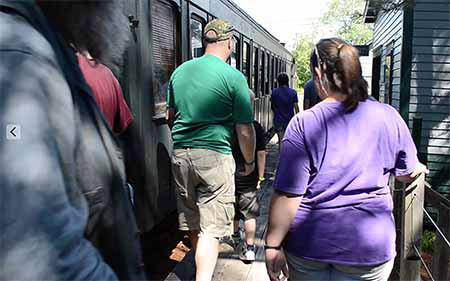
Volunteers and donations are always welcome. Our desires are to preserve, restore and operate as much of the railroad as possible and to provide a means of perpetuating the memory of this fine piece of Maine industrial and economic development. Please come and visit us.
